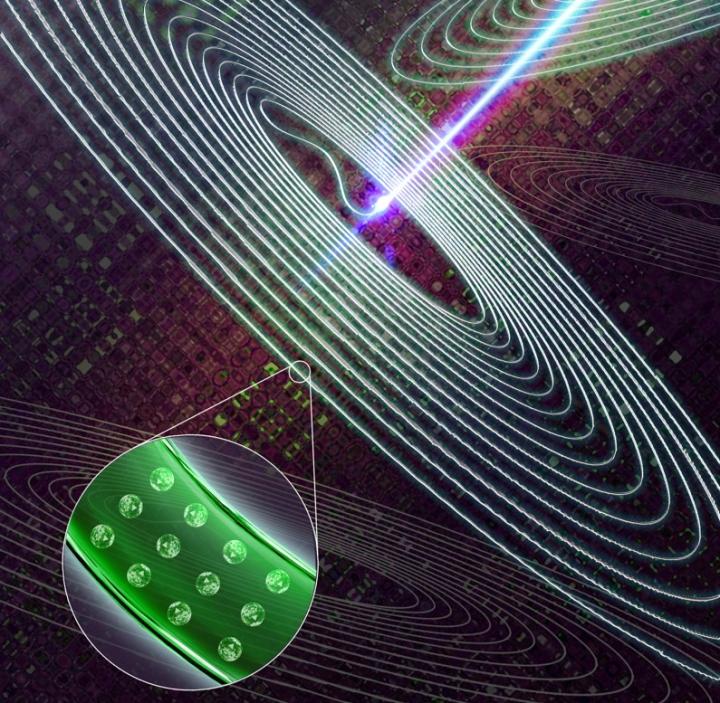7-Jun-2016
Australian researchers at the University of Adelaide have developed a method for embedding light-emitting nanoparticles into glass without losing any of their unique properties -- a major step towards 'smart glass' applications such as 3D display screens or remote radiation sensors.
This new "hybrid glass" successfully combines the properties of these special luminescent (or light-emitting) nanoparticles with the well-known aspects of glass, such as transparency and the ability to be processed into various shapes including very fine optical fibres.
The research, in collaboration with Macquarie University and University of Melbourne, has been published online in the journal Advanced Optical Materials.
"These novel luminescent nanoparticles, called upconversion nanoparticles, have become promising candidates for a whole variety of ultra-high tech applications such as biological sensing, biomedical imaging and 3D volumetric displays," says lead author Dr Tim Zhao, from the University of Adelaide's School of Physical Sciences and Institute for Photonics and Advanced Sensing (IPAS).
"Integrating these nanoparticles into glass, which is usually inert, opens up exciting possibilities for new hybrid materials and devices that can take advantage of the properties of nanoparticles in ways we haven't been able to do before. For example, neuroscientists currently use dye injected into the brain and lasers to be able to guide a glass pipette to the site they are interested in. If fluorescent nanoparticles were embedded in the glass pipettes, the unique luminescence of the hybrid glass could act like a torch to guide the pipette directly to the individual neurons of interest."
Although this method was developed with upconversion nanoparticles, the researchers believe their new 'direct-doping' approach can be generalised to other nanoparticles with interesting photonic, electronic and magnetic properties. There will be many applications - depending on the properties of the nanoparticle.
"If we infuse glass with a nanoparticle that is sensitive to radiation and then draw that hybrid glass into a fibre, we could have a remote sensor suitable for nuclear facilities," says Dr Zhao.
To date, the method used to integrate upconversion nanoparticles into glass has relied on the in-situ growth of the nanoparticles within the glass.
"We've seen remarkable progress in this area but the control over the nanoparticles and the glass compositions has been limited, restricting the development of many proposed applications," says project leader Professor Heike Ebendorff-Heideprem, Deputy Director of IPAS.
"With our new direct doping method, which involves synthesizing the nanoparticles and glass separately and then combining them using the right conditions, we've been able to keep the nanoparticles intact and well dispersed throughout the glass. The nanoparticles remain functional and the glass transparency is still very close to its original quality. We are heading towards a whole new world of hybrid glass and devices for light-based technologies."
Related Journal Article















